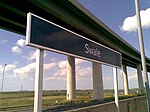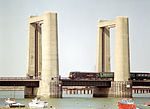Iwade Speedway
Buildings and structures in KentSittingbourneSport in KentSports venues completed in 1971Sports venues in Kent ... and 1 more
Use British English from March 2024
Iwade Speedway is a motorcycle speedway venue approximately four miles north of Sittingbourne in Kent. The track is located off Old Ferry Road, on the site of a former gun site.
Excerpt from the Wikipedia article Iwade Speedway (License: CC BY-SA 3.0, Authors).Iwade Speedway
Old Ferry Road, Borough of Swale Iwade
Geographical coordinates (GPS) Address Nearby Places Show on map
Geographical coordinates (GPS)
| Latitude | Longitude |
|---|---|
| N 51.39 ° | E 0.72888888888889 ° |
Address
SITRA Iwade Speedway
Old Ferry Road
ME9 8SP Borough of Swale, Iwade
England, United Kingdom
Open on Google Maps







